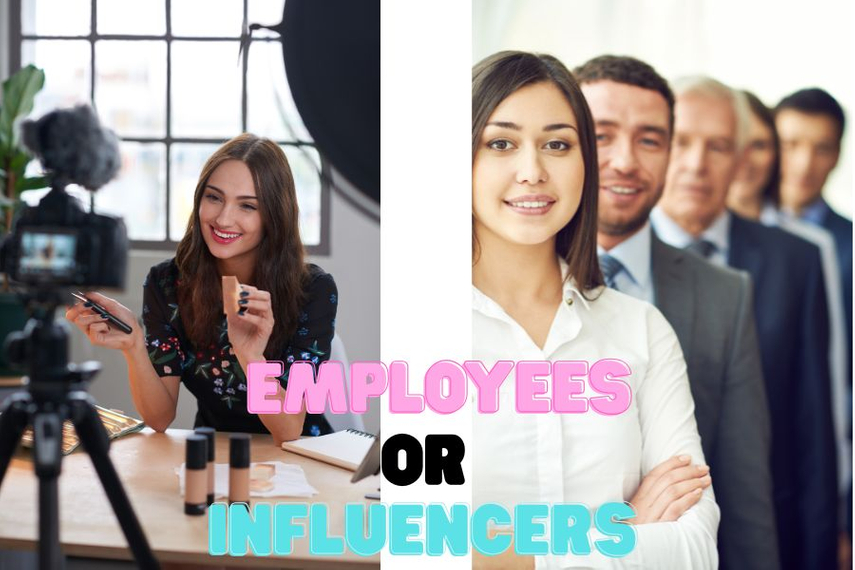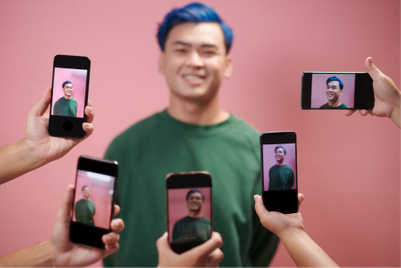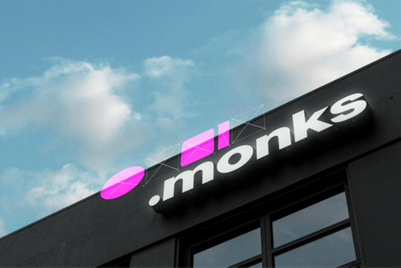
Employee advocacy and influencer marketing are two people-powered tactics used to boost brand visibility on social media. While they often get lumped together, they differ significantly in approach, execution, and impact.
The decision to use either—or ideally, both—should be guided by four key parameters: volume of reach, authenticity, logistics, and consistency. Your team’s operational bandwidth, marketing strategy, and campaign timelines will ultimately determine which mix works best.
The question isn’t which one to adopt, but rather how to deploy them together. This becomes especially relevant for B2B organisations, where traditional advertising is often a smaller part of the marketing budget. In such contexts, employee advocacy can be a core strategic pillar—not just for reach, but for enhancing internal engagement and brand culture.
Real voices, real trust
Employee advocacy involves enabling the workforce—from junior staff to senior leadership—to promote the brand, products, or values through their own social networks. It's essentially corporate word-of-mouth marketing, with the added benefit of authenticity and internal alignment.
A major advantage lies in trust. According to the 2023 Edelman Trust Barometer, 68% of consumers trust “people like me” over traditional advertising. Employee-generated posts carry a raw, unpolished credibility that outperforms budget-fuelled campaigns in believability. These posts are often spontaneous, organic, and not subject to the promotional fatigue associated with influencer or brand content.
It’s also cost-effective. Unlike influencer marketing, there are no hefty payouts per post. However, a successful employee advocacy programme does require structured investment in tools, gamification mechanics, and rewards systems. These elements help scale distribution and maintain momentum. Even a single employee with 500 LinkedIn connections can spark thousands of impressions with one well-timed post.
Crucially, employees already live the brand every day. Their understanding of the company’s mission makes their advocacy more culturally aligned and consistent with brand values.
For such programmes to thrive, though, they require sustained support—training on platforms and messaging, incentives for participation, and cross-team coordination. That effort often results in deeper engagement both within and beyond the organisation.
Unlike short-term influencer collaborations, employee advocacy demands ongoing alignment and consistency. But it’s precisely this continuity that makes it a powerful engine for authentic reach.
But there are limits
Despite its strengths, employee advocacy comes with trade-offs. Reach is often limited by the size of each employee’s network. Even among the most enthusiastic participants, posts tend to be staggered in timing, diluting cumulative visibility.
Moreover, not everyone is a natural content creator. Without programme management, engagement can quickly taper off. Maintaining momentum requires a strong internal push—whether through gamification, peer recognition, or team-level KPIs.
Additionally, control remains a concern. Employees are not brand puppets; even well-intentioned posts can veer off-brand or stir unintended controversy. While guidelines and training can help, human error can’t be entirely eliminated.
Visibility at scale
Influencer marketing, by contrast, revolves around partnering with individuals who command significant or niche audiences on social platforms. What began as a follower-count-driven discipline has now matured into a performance- and engagement-led practice. Influencer collaborations are increasingly viewed as brand partnerships, with content co-creation and community resonance taking precedence over mere amplification.
Today, influencers are segmented by reach: mega (1 million+), macro (100,000–1 million), micro (10,000–100,000), and nano (1,000–10,000). Interestingly, many employees may themselves fall into the nano category, which opens up opportunities for brands to blend both models.
Reach remains influencer marketing’s biggest strength. A single sponsored post from a macro or mega influencer can generate millions of impressions almost instantly.
However, follower count alone isn’t enough—engagement, brand fit, and content quality matter more. In 2024, the global influencer marketing industry generated $21.2 billion in ad spend, according to Influencer Marketing Hub, underscoring its growing mainstream acceptance.
Influencers are skilled content creators. Their posts are typically visually striking, algorithmically optimised, and emotionally engaging. Their storytelling ability often delivers stronger brand recall than traditional ads. And with influencers representing every conceivable niche—from beauty and fashion to fintech, gaming, and even B2B sectors—brands can precisely target the audiences they care about.
But it’s not always a silver bullet
Trust, however, remains a sticking point. Consumers increasingly recognise influencer content as paid promotion.
As per Edelman’s 2023 report, only 43% trust influencer content—compared to 68% for peer recommendations. Most platforms now also require clear disclosure of sponsored posts, which reduces the organic feel and flags it explicitly as advertising.
Cost is another consideration. Top-tier influencers charge premium rates, and even micro-influencers—while more affordable—often lack the pull to deliver significant ROI.
Budgets can balloon quickly, especially for multi-platform campaigns. Furthermore, misalignment is a real risk. An influencer who doesn’t fully understand or embody a brand’s values can dilute the message—or worse, cause reputational harm. For instance, an eco-conscious brand aligning with someone known for fast fashion could spark audience backlash.
Advocacy versus influencer marketing
When measured on key performance dimensions, both approaches come with trade-offs. Employee advocacy is low-cost, requiring only investment in internal platforms and incentives. Influencer marketing, on the other hand, commands higher per-post or per-campaign budgets. Influencers also offer instant, high-volume reach, while employees tap into smaller, more trusted networks.
When it comes to authenticity, employees are perceived as insiders and offer high authenticity. Influencers vary, with trust declining in overtly paid partnerships.
Companies have moderate control over employee content (with guidelines), but significantly less with influencers, who retain creative freedom. Employee content can generate high engagement—up to 8x more than brand-shared content, according to a 2024 Sprout Social study. Influencer content, meanwhile, sees average engagement rates of 3–5%, compared to 1–2% for branded posts.
Influencer marketing also scales more easily across markets and platforms. On the other hand, employee advocacy is limited by workforce size and internal adoption rates.
The smarter strategy? Use both
According to a 2023 Nielsen study, employee advocacy programmes yield an average ROI of 6:1. Influencer campaigns vary more widely—top-tier influencers often deliver lower ROI due to steep fees, while micro and nano influencers can perform better in niche categories.
Meanwhile, Edelman also found that while consumers trust employee content 25% more than influencer content, influencer campaigns still drive 40% more direct conversions for e-commerce brands. This highlights the differing strengths: trust and culture-building on one side, sales and scale on the other.
For B2B brands and small businesses, employee advocacy offers efficient and authentic reach. For large-scale consumer brands chasing visibility and performance metrics, influencers are indispensable. But smart marketers aren’t choosing one over the other—they’re combining them.
Use employee advocacy to build credibility and internal alignment, and supplement it with influencer partnerships for burst reach and creative impact. Together, they form a powerful hybrid strategy that blends trust with scale and continuity with creativity.
The marketing landscape today doesn’t reward brands for picking sides. It rewards those who play to their strengths and orchestrate the best of both worlds.

- Ajit Narayan, chief marketing officer, Socxo



.jpg&h=334&w=500&q=100&v=20250320&c=1)
.jpg&h=334&w=500&q=100&v=20250320&c=1)
.jpg&h=334&w=500&q=100&v=20250320&c=1)
.jpg&h=334&w=500&q=100&v=20250320&c=1)
.jpg&h=334&w=500&q=100&v=20250320&c=1)

.jpg&h=334&w=500&q=100&v=20250320&c=1)
.jpg&h=334&w=500&q=100&v=20250320&c=1)
.jpg&h=334&w=500&q=100&v=20250320&c=1)


.jpg&h=268&w=401&q=100&v=20250320&c=1)
.jpg&h=268&w=401&q=100&v=20250320&c=1)
.jpg&h=268&w=401&q=100&v=20250320&c=1)
.jpg&h=268&w=401&q=100&v=20250320&c=1)

.jpg&h=268&w=401&q=100&v=20250320&c=1)
